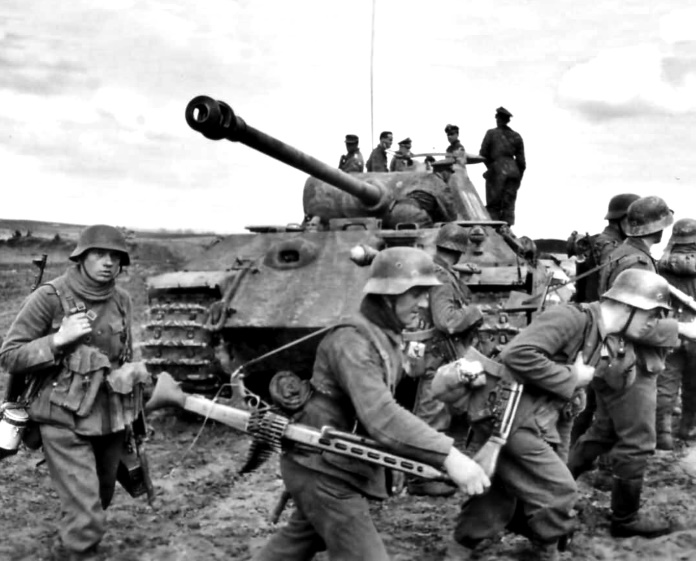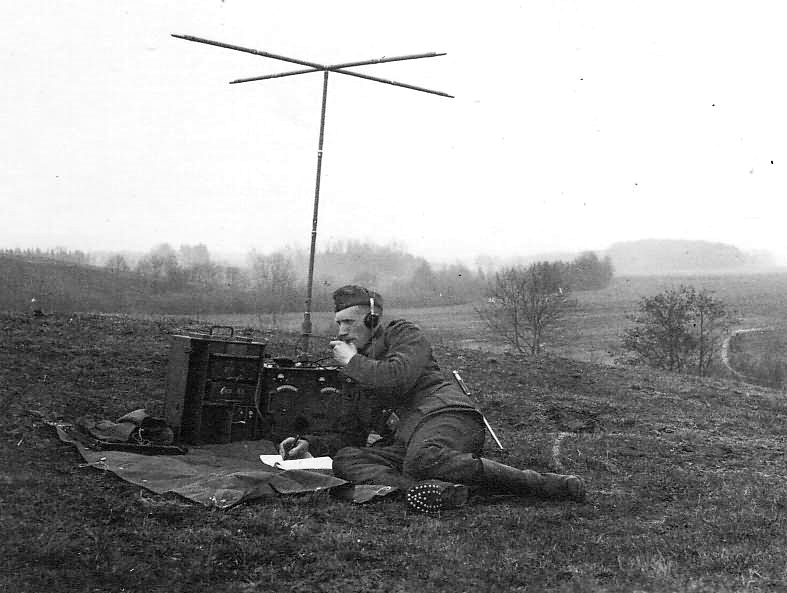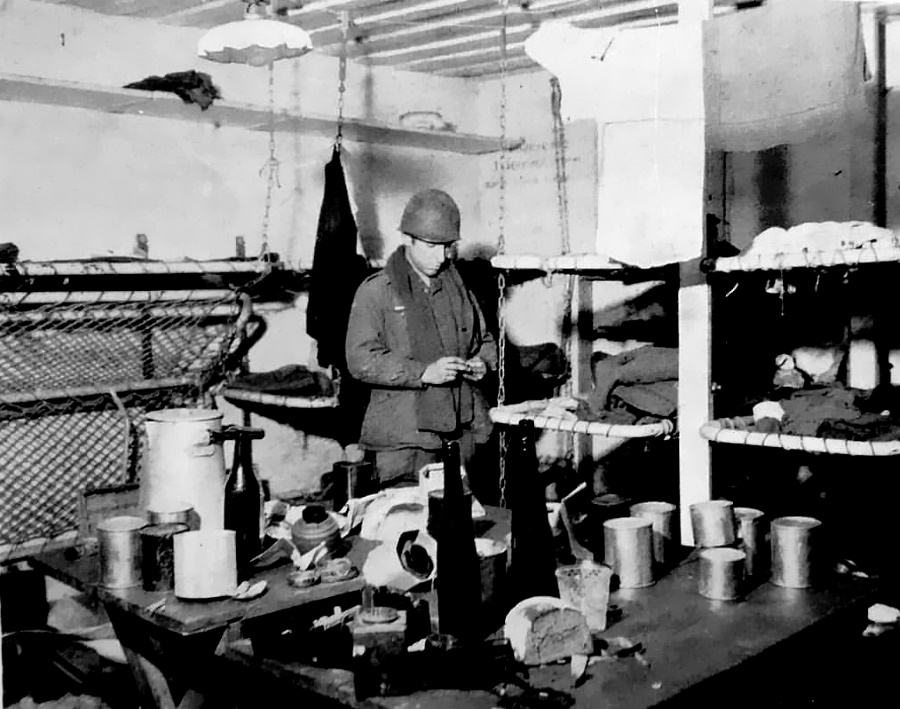 September 13 1944, LXXXI Corps to the 9. Pz Div
September 13 1944, LXXXI Corps to the 9. Pz Div
1915 13 Sep 44
LXXXI Corps KTB, Kampfverlauf
At the LXXXI Corps headquarters, American intentions emerged more clearly. The corps operations officer called Gen Mahlmann of the 353.Infantry-Division to inform him that the enemy was probably to launch a drive bypassing Aachen from the penetration area near Kornelimuenster and Hahn toward the second band of defenses (Schill Line). The three Landesschuetzen battalions under the command of 353.ID was alerted to stand by for action. The Corps also ordered the 116.Panzer-Division to transfer the 8.Luftwaffe-Fortress-Battalion and one battery of artillery to the 9.PD.
 September 13 1944, LXXXI Corps to Gen Mahlmann;
September 13 1944, LXXXI Corps to Gen Mahlmann;
2040 13 Sep 44, LXXXI Corps KTB, Kampfverlauf LXXXI Corps to the 116. Pz Div;
2320 13 Sep 44, LXXXI Corps KTB, Kampfverlauf
 As September 13, drew to a close, the American advance against the LXXXI Corps sector had been checked temporarily. The salient north of Hauset was wiped out. The penetrations on both sides of Walheim had been sealed off in the line Kornelimuenster – Hahn. The southern prong of the US 3-AD attack which had advanced across Rott had been checked at Mulartshuette. The night from September 13 to September 14 passed quietly in the entire LXXXI Corps sector. The Germans observed strong American infantry and armored forces assembling in the Schleckheim – Walheim area but found Oberforstbach unoccupied. In the southern outskirts of Aachen, American recon on the morning of September 14, probed the 116.Panzer-Division front line at Bildchen toward Bunker #189 and Grenzhof. The American infantry with strong artillery support jumped off against the entire division front and broke through the bunker line in many places. The bunkers were bypassed singly and fought down from the flank and rear by US infantry while American tanks followed up the attack. Afternoon, the bunkers at Bildchen and Koepfchen, southwest and south of Aachen respectively, were in American hands. The 116.Panzer-Division forces were now defending a semi-circle around Aachen, from the Vaelser Quartier west of Aachen to the boundary with the 9.Panzer-Division southeast of the city. Their intentions were to defend this line and to counterattack southward whenever possible.
As September 13, drew to a close, the American advance against the LXXXI Corps sector had been checked temporarily. The salient north of Hauset was wiped out. The penetrations on both sides of Walheim had been sealed off in the line Kornelimuenster – Hahn. The southern prong of the US 3-AD attack which had advanced across Rott had been checked at Mulartshuette. The night from September 13 to September 14 passed quietly in the entire LXXXI Corps sector. The Germans observed strong American infantry and armored forces assembling in the Schleckheim – Walheim area but found Oberforstbach unoccupied. In the southern outskirts of Aachen, American recon on the morning of September 14, probed the 116.Panzer-Division front line at Bildchen toward Bunker #189 and Grenzhof. The American infantry with strong artillery support jumped off against the entire division front and broke through the bunker line in many places. The bunkers were bypassed singly and fought down from the flank and rear by US infantry while American tanks followed up the attack. Afternoon, the bunkers at Bildchen and Koepfchen, southwest and south of Aachen respectively, were in American hands. The 116.Panzer-Division forces were now defending a semi-circle around Aachen, from the Vaelser Quartier west of Aachen to the boundary with the 9.Panzer-Division southeast of the city. Their intentions were to defend this line and to counterattack southward whenever possible.
 September 14 1944, Rad; (116. Pz Div to LXXXI Corps)
September 14 1944, Rad; (116. Pz Div to LXXXI Corps)
1255 14 Sep 44
LXXXI Corps KTB, Meldungen der Div
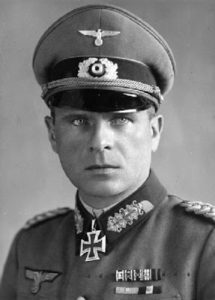 A short time later the division was forced to admit that all attempts to regain the belt of bunkers had failed because the densely wooded terrain (Aachen Municipal Forest) made adequate tank support and artillery observation impossible. As American forces drew closer to the city, the panic in Aachen reached a new high. According to Gen von Schwerin conditions were catastrophic. No police or civil authorities had yet returned to Aachen. The old museum director of Aachen, accompanied by a few city officials who had stayed at their posts, came to see von Schwerin to tell him that a group of leading citizens had chosen him, the museum director, to form a provisional city government. The general gave orders for the evacuation to proceed, provided rail and motor transport were available but emphasized that it would only result in clogging up vital thoroughfares.
A short time later the division was forced to admit that all attempts to regain the belt of bunkers had failed because the densely wooded terrain (Aachen Municipal Forest) made adequate tank support and artillery observation impossible. As American forces drew closer to the city, the panic in Aachen reached a new high. According to Gen von Schwerin conditions were catastrophic. No police or civil authorities had yet returned to Aachen. The old museum director of Aachen, accompanied by a few city officials who had stayed at their posts, came to see von Schwerin to tell him that a group of leading citizens had chosen him, the museum director, to form a provisional city government. The general gave orders for the evacuation to proceed, provided rail and motor transport were available but emphasized that it would only result in clogging up vital thoroughfares.
In addition to having to cope with the frantic civilian population, the 116.Panzer-Division, which on September 14 assumed direct command of all German elements in its sector, also had trouble with the Luftwaffe. In total disregard for the division commander’s orders, the Luftwaffe attempted to pull its AAA batteries out of Aachen. FM von Rundstedt (Commander in Chief West) himself had to interfere, reminding Luftwaffe AAA troops that they were to take orders, like everybody else, from the superior headquarters to which they were attached. Gen von Schwerin also complained that his Luftwaffe fortress battalions had a tendency to desert their positions in the face of even minor attacks.
 September 14 1944, LXXXI Corps to Gen von Schwerin 0930, Sept 14 LXXXI Corps KTB, Kampfverlauf; Rpt, A Gp B to OB WEST 1200, Sept 14, OB WEST KTB. Rad; (116. Pz Div to LXXXI Corps) 1310 Sept 14, LXXXI Corps KTB, Meldungen der Div. (Schwerin); MS # B-058 (Voigtsberger)
September 14 1944, LXXXI Corps to Gen von Schwerin 0930, Sept 14 LXXXI Corps KTB, Kampfverlauf; Rpt, A Gp B to OB WEST 1200, Sept 14, OB WEST KTB. Rad; (116. Pz Div to LXXXI Corps) 1310 Sept 14, LXXXI Corps KTB, Meldungen der Div. (Schwerin); MS # B-058 (Voigtsberger)
Gen Heinrich Voigtsberger commanded the 60.Panzer-Grenadier-Regiment, when Count von Schwerin was relieved of the command of 116.Panzer-Division on September 15, Gen Voigtsberger became acting division commander until the new commanding officer, Gen Siegfried von Waldenburg, arrived on September 19. Early in the afternoon of September 14, strong American infantry and armored forces rolled up the bunker line from the direction of Brand, Niederforstbach and Oberforstbach. By 1500 they had gained a line extending from the Beverbach Creek via Linzenshaeuschen (Eupen – Aachen Road) to the Friedrichsberg Hill. The 116.Panzer-Division, attempting to hold the line from the West Wall to the south of the Vaelser Quartier, from there to north of Friedrichsberg Hill – Linzenshaeuschen – the Beverbach Creek, had lost contact with the 9.Panzer-Division on its left, southeast of Aachen. The Germans noted that their opponents were employing new tactics to crack the West Wall bunkers, the Americans would launch strong infantry attacks covered by smoke screens while the tanks followed to back up the attack and to support the infantry in knocking out the bunkers one by one. The Americans made heavy use of artillery and smoke screens.
 September 14 1944
September 14 1944
LXXXI Corps to 116. Pz Div 1500 Sept 14
LXXXI Corps KTB, Kampfverlauf
Southeast of Aachen in the sector of 9.PD, the American combat commands resumed their drive up the Stolberg Corridor in the morning of September 14. Having taken Oberforstbach and Niederforstbach, they captured Kornelimuenster at 1030 and Breinig at 1100. American tanks were observed shortly after noon continuing northeastward from Kornelimuenster toward Buesbach. At about the same time the Germans reported an American tank driving from Mulartshuette northeastward toward Zweifall. A few hours later, in 1715, American infantry, tanks, and armored cars entered Zweifall. After fifteen minutes, the infantry had captured the first four Bunkers #330, #334, #335, and #336 in the second band of the West Wall fortifications, and the task force continued eastward through the breach in the direction of Vicht and Mausbach.
 September 14 1944; LXXXI Corps to 353. Inf Div 1715 and 1720 Sept 14 1944
September 14 1944; LXXXI Corps to 353. Inf Div 1715 and 1720 Sept 14 1944
LXXXI Corps to the 9. Pz Div; 2000 Sept 14 1944
LXXXI Corps KTB, Kampfverlauf
In view of the American breakthrough at Zweifall, the LXXXI Corps ordered the 9.Panzer-Division to take command of the second band of the West Wall along with the Landesschuetzen battalions (3/6 and 1/9) committed there. Hqs 353.Infantry-Division would be disengaged to receive another assignment. Reinforced by the 3.assault guns of the 394.Assault-Gun-Brigade, the 9.Panzer-Division married these assault guns to a company of motorized infantry and committed these forces in a counterattack against the American task force driving on Mausbach. The LXXXI Corps issued strict orders to the 9.Panzer-Division to throw back the Americans before the end of the day and to regain full control of the second belt of the West Wall Bunkers. The front line of the 9.Panzer-Division now extended from the southern edge of Brand – the southern edge of Buesbach – east of Zweifall to the West Wall east of Roetgen.
At About 1800, the Germans reported that at least two hundred American tanks had assembled in Kornelimuenster. Additional columns were seen moving north from Walheim. Up front, the American spearhead reached the southern outskirts of Stolberg in 2000. Apparently, the Americans then decided not to continue their advance toward Stolberg and Eschweiler that evening. Instead, they worked on their encirclement of Aachen in the area between Aachen and Stolberg.
 September 14 1944 9. Pz Div
September 14 1944 9. Pz Div
2030 Sept 14, 1944,
LXXXI Corps KTB, Kampfverlauf
Late in the afternoon American forces broke through the 116.Panzer-Division line between the Beverbach Creek and Lindert, 2 miles west-southwest of Brand, and stabbed into the flank of the 60.Panzer-Grenadier-Regiment. The 116.Panzer-Recon-Battalion was committed in support the division’s flank southeast of the Aachen Municipal Forest. American tanks and armored cars driving north from the Walheim – Oberforstbach – Niederforstbach area pushed through Brand at 1830. Less than an hour later, at 1915, American tanks captured Eilendorf and the steel plant at Rothe Erde east of Aachen. The city was now ringed on three sides. The LXXXI Corps received reports that sizeable elements of 116.Panzer-Division, AAA Group Aachen, and the Kampfkommandant were withdrawing to the northeast, supposedly in line with an order issued by Col von Osterroth. Gen Schack immediately ordered that all withdrawing elements be rallied and committed in a counter-attack from the Wurselen area southward toward Rothe Erde. Contact between 116.Panzer-Division and 9.Panzer-Division was to be re-established at all cost through the efforts of all able officers of the 116.Panzer-Division Hqs. A rear area fortress engineer headquarters received orders to block the Autobahn to Cologne.
 September 14 1944 Gen Schack
September 14 1944 Gen Schack
2145 Sept 14, 1944,
LXXXI Corps KTB, Kamnpfverlauf
By special report order from Hitler Aachen was to be evacuated – if necessary, by force. The 116.Panzer-Division was ordered to support the evacuation measures by regulating traffic. The police would also be available after 0100 on September 15. They were finally returning to Aachen. The mission of the 116.Panzer-Division on September 15 was to hold the Schill Line at all cost and to make an effort to wipe out the American penetrations at Rothe Erde and Eilendorf.
The Siegfried Line – West Wall
In spite of Gen Schack’s orders the projected counter-attack against this salient had not yet been launched at daybreak. The semicircular front around Aachen remained intact from the Vaelser Quartier to Steinebrueck in the morning of September 15 but buckled just east of Steinebrueck when American infantry and armor pushed the 116.Panzer-Recon-Battalion back to the railroad leading out of Aachen northeast of Burtscheid. Reinforced by the MG-34 Battalion which had been rallied after an earlier attempt to withdraw, the Recon Battalion established a defense line along this railway embankment. The attackers did not immediately attempt to break through this line. The Americans devoted a large part of the day to the concentration of strong forces in the area south of Burtscheid. Judging from the movements they observed and from American artillery fire, the Germans estimated that at least one infantry division was assembling south of Aachen.
 September 15 1944, Tagesmeldungen 116. Pz Div
September 15 1944, Tagesmeldungen 116. Pz Div
2100 Sept 15, 1944,
LXXXI Corps KTB
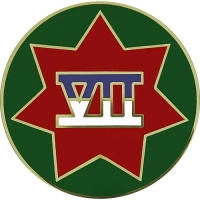 East of the city, in and south of Eilendorf, American tanks, and motor transport also continued to assemble until, according to German estimate, US forces there had been brought up to the strength of about one armored division. In view of the American build-up, the Germans expected that VII Corps would launch its all-out attack against Aachen on September 16. Although ground operations seem to have been limited to recon while this build-up south and east of Aachen was in progress, American artillery subjected Aachen and its suburbs to heavy fire. The West Wall bunkers north and the south of the Aachen – Stolberg road, in particular, received strong rocket projector fire.
East of the city, in and south of Eilendorf, American tanks, and motor transport also continued to assemble until, according to German estimate, US forces there had been brought up to the strength of about one armored division. In view of the American build-up, the Germans expected that VII Corps would launch its all-out attack against Aachen on September 16. Although ground operations seem to have been limited to recon while this build-up south and east of Aachen was in progress, American artillery subjected Aachen and its suburbs to heavy fire. The West Wall bunkers north and the south of the Aachen – Stolberg road, in particular, received strong rocket projector fire.
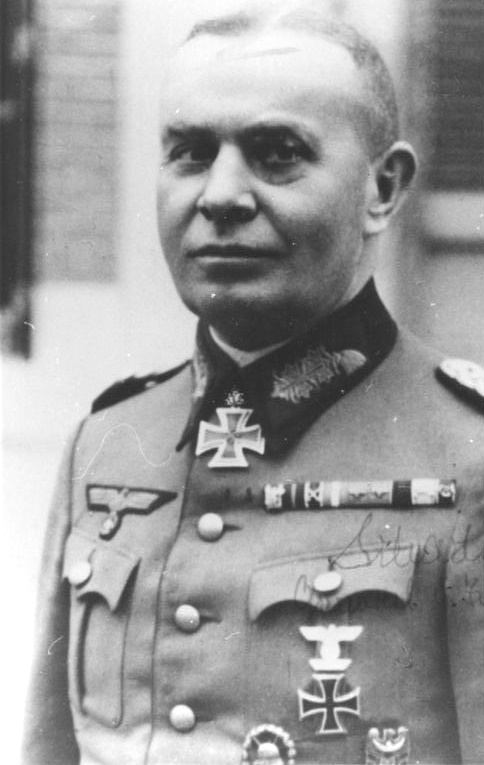 At 1530 on September 15, American infantry began to infiltrate the bunker line south of Rothe Erde in the direction of the Geisberg Hill. The Landesschuetzen Battalion there abandoned its positions but seven German assault guns held the line behind the pillboxes. At 1700, American forces jumped off in simultaneous attacks from the Buschhaus toward Burtscheid, and from Eilendorf north and northeast in the direction of Verlautenheide and the Geisberg Hill.
At 1530 on September 15, American infantry began to infiltrate the bunker line south of Rothe Erde in the direction of the Geisberg Hill. The Landesschuetzen Battalion there abandoned its positions but seven German assault guns held the line behind the pillboxes. At 1700, American forces jumped off in simultaneous attacks from the Buschhaus toward Burtscheid, and from Eilendorf north and northeast in the direction of Verlautenheide and the Geisberg Hill.
The defenders were able to repulse both attacks. Thirty American tanks rolling northward from Eilendorf were forced to withdraw in the face of concentrated German artillery fire; the Germans claimed the destruction of two US tanks.
 September 15 1944
September 15 1944
Tagesmeldungen LXXXI Corps to 116. Pz Div
0915 Sept 15, 1944 LXXXI Corps KTB, Kampfverlauf
 September 15 1944, LXXXI Corps to 116. Pz Div, 1718 Sept 15 1944 KTB, Kampfverlauf. 116. Pz Div 2100 Sept 15 1944 LXXXI Corps KTB, Tagesmeldung
September 15 1944, LXXXI Corps to 116. Pz Div, 1718 Sept 15 1944 KTB, Kampfverlauf. 116. Pz Div 2100 Sept 15 1944 LXXXI Corps KTB, Tagesmeldung












